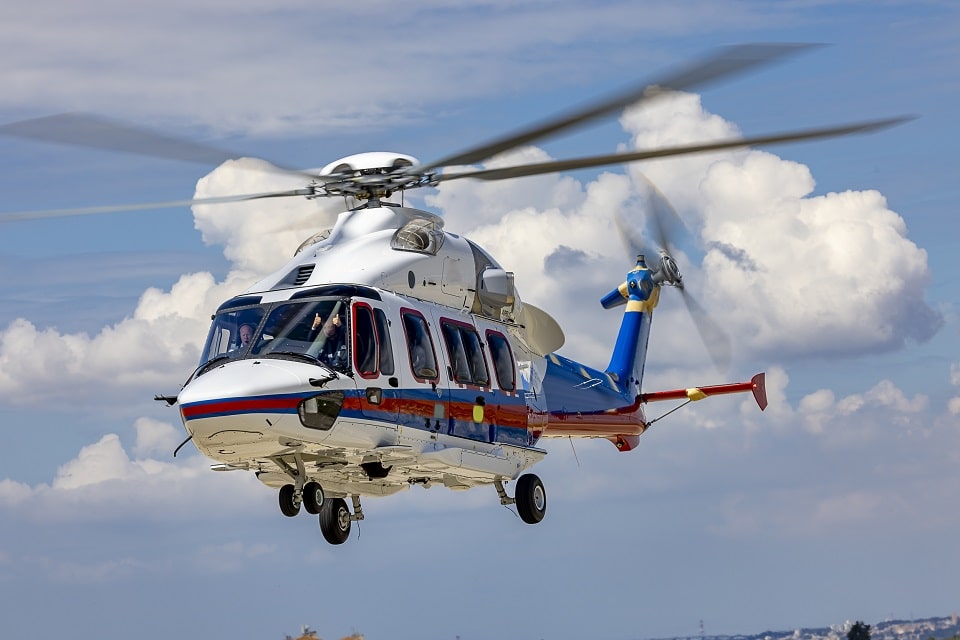Aerospace
Airbus Helicopters H175 granted CAAC certification

The H175 helicopter from Airbus Helicopters has been approved by the Civil Aviation Administration of China (CAAC).
With a growing demand for super-medium helicopters, China is one of the most competitive markets in the world and will now be able to start receiving H175 deliveries. Chinese clients will receive four H175s in 2023.
CAAC issues brief statement on China Eastern 737 crash(Opens in a new browser tab)
According to Bruno Even, CEO of Airbus Helicopters, “the Chinese certification of the H175 is another great achievement in the continued successful partnership between Airbus Helicopters and the Chinese helicopter industry.” “The H175’s cutting-edge, state-of-the-art performances and reliability will help to give the Chinese people the ability to perform vital life-saving missions even in harsh environments.”
The C919 plane from China is given the go-ahead for mass production.(Opens in a new browser tab)
Airbus Helicopters is committed to collaborating with Chinese industry to expand the Chinese civil market with products like the H175 in order to further the interests of the Chinese people and the country’s economy. This commitment is necessary to maintain the growth of the Chinese helicopter market. The Airbus H175 is a helicopter in the super-medium size range that has been in service since 2015.
The finest answer for a variety of missions, including offshore crew changes, SAR, all public services, and private and business aviation, is provided by this aircraft since it combines great range with superior flight quality. Over 185,000 flight hours have been logged by the 53 H175s that are now in use across 13 different nations.

Aerospace
Boeing Transfers Rocket Stage to NASA, Paving Way for Human Moon Mission

Boeing has achieved a significant milestone by providing NASA with the second core stage of the Space Launch System (SLS) rocket.
This crucial component, crafted at NASA’s Michoud Assembly Facility (MAF), is set to propel the Artemis II crew into lunar orbit, marking humanity’s return to deep space after a 50-year hiatus.
The monumental Boeing-built rocket stage, the largest element of the Artemis II mission, will embark on a journey aboard the Pegasus barge, traveling 900 miles to NASA’s Kennedy Space Center.
Comparison of two legendary aircraft B777x vs B747 aircraft:Click here
Upon arrival, it will be meticulously integrated with other essential Artemis II components, including the upper stage, solid rocket boosters, and NASA’s Orion spacecraft within the iconic Vehicle Assembly Building. This intricate integration process is a vital step toward the eagerly anticipated Artemis II launch, slated for 2025.
“Boeing-built products helped land humankind on the moon in 1969, and we’re proud to continue that legacy through the Artemis generation,” remarked Dave Dutcher, vice president and program manager for Boeing’s SLS program. “Together, with NASA and our industry partners and suppliers, we are building the world’s most capable rocket and paving the way to deep space through America’s rocket factory in New Orleans.”
NASA, Lockheed Martin Reveal X-59 Quiet Supersonic Aircraft:Click here
The delivery of Core Stage 2 marks a significant achievement in the evolution of the SLS rocket. Towering over 200 feet and powered by four RS-25 engines, this core stage, coupled with two solid-fueled booster rockets, will generate a staggering 8.8 million pounds of thrust. This immense power is crucial to launching Artemis II and future missions into the vast expanse of space.
The SLS rocket stands unparalleled in its capability to transport both crew and substantial cargo to the moon and beyond in a single launch. Its extraordinary capacity will facilitate the delivery of human-rated spacecraft, habitats, and scientific missions to destinations including the moon and Mars, ushering in a new era of space exploration.
-

 Travel1 week ago
Travel1 week agoAir India to Expand US Operations with Three New Routes After a Decade
-

 Travel2 weeks ago
Travel2 weeks agoWhy We Should Avoid These Stamps in a Passport
-

 Airlines1 month ago
Airlines1 month agoInvestigations Reveal Fake Chinese Titanium in Boeing and Airbus Jets
-

 Tech4 weeks ago
Tech4 weeks agoChina’s CATL Plans 1,800-Mile Electric Plane Launch by 2027
-

 Airport3 days ago
Airport3 days agoTop 10 Largest Airports in the World by Size
-

 Aerospace4 weeks ago
Aerospace4 weeks agoChina’s Fighter Jets Turn Wings into Autonomous Drones
-

 Airlines4 days ago
Airlines4 days agoAir India Rolls Out A350s for Delhi-New York JFK and Newark Routes
-

 Defence3 weeks ago
Defence3 weeks agoBoeing Enhances Chinook with New Engines and Block II Upgrades at $96 Million







